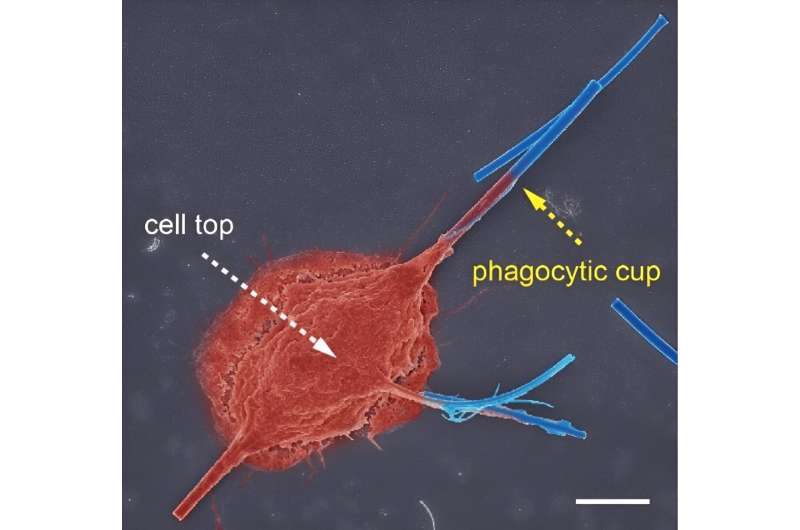This article has been reviewed according to Science X's editorial process and policies. Editors have highlighted the following attributes while ensuring the content's credibility:
fact-checked
peer-reviewed publication
trusted source
proofread
Size and shape of inhaled asbestos nanofibers may be exclusively responsible for pulmonary fibrosis

The pathogenic potential of inhaling the inert fibrous nanomaterials used in thermal insulation (such as asbestos or fiberglass) is actually connected not to their chemical composition, but instead to their geometrical characteristics and size. The reason for this is the inability of the macrophages naturally present in pulmonary alveolar tissue to eliminate foreign bodies that are too large.
This finding was revealed in study conducted on glass nanofibers by a French-Chinese team including a CNRS chemist. The research was published on 3 January 2024 in the journal Nature Nanotechnology.
The study was initially conducted in vitro with electrochemical nanosensors. When confronted with inert nanofibers more than 15 microns in length, the cells in the lung are unable to distend enough to entirely encapsulate them within their "digestive" vesicle. This results in leaked secretions that are very harmful to the alveolar walls, which this study detected, characterized, and quantified for the first time.
An experiment on rats subsequently showed that regular unprotected inhalation of similar inert fibrous nanomaterials, whatever they may be, causes repeated pulmonary lesions that can eventually lead to the development of fibroma.
This discovery poses a challenge for the use of inert nanofiber felts in construction, which had heretofore been deemed to be less harmful than the asbestos it replaced, but that in reality could present the same health risks for those handling it.
More information: Yu-Ting Qi et al, Nanosensor detection of reactive oxygen and nitrogen species leakage in frustrated phagocytosis of nanofibres, Nature Nanotechnology (2024). DOI: 10.1038/s41565-023-01575-0
Journal information: Nature Nanotechnology
Provided by CNRS




















